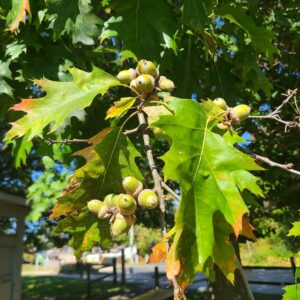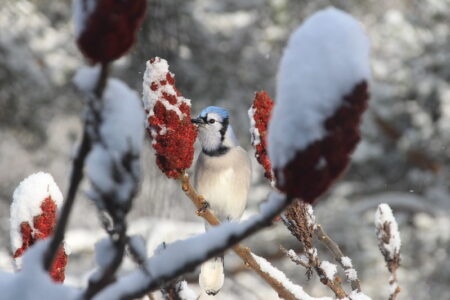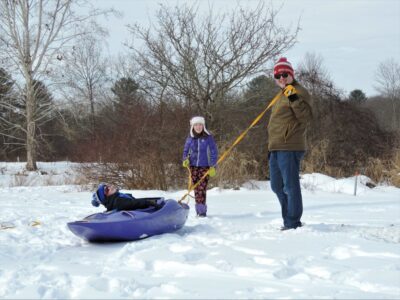Boom or bust in fall seeds
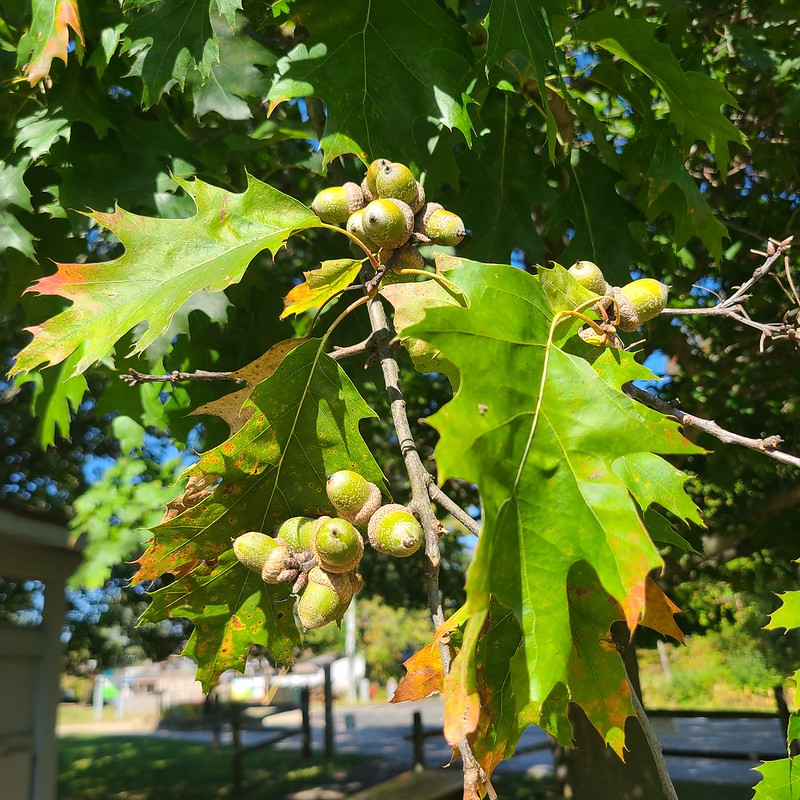
Acorns growing on a Red Oak tree.
- Acorns growing on a Red Oak tree.
- Sumac berries are a multi-season food source for birds and other animals.
The shortened days and cooler temperatures are also signaling to animals that it is time to prepare for decreased abundance in food and harsher environments. Some animals are highly active through this season as they spend it collecting, storing, or just plain eating a whole bunch of food. Other animals will remain active through the winter, but even they will work on making sure they can get the nutrients in now while they can.
The capability to store and eat more food depends on the actual presence and availability of said food. Despite the autumn narrative of things slowing down or dying back, late August through early October has its fair share of new and continuing growth. While animals can continue to eat the same plant matter, fungi, and insects found throughout the summer, there are new food sources popping up right now.
In the fall, much of the nutrient dense and collectable food is something called mast. Mast is an overarching term for a plant’s edible seeds in the form of nuts and fruit. There are, of course, fruits and nuts appearing in spring and summer as well, and for many vertebrates, this is one of their main sources of food. There are also many plants that grow or finish up their seed production in the fall. These seeds will lie dormant over the winter and begin growing again next spring.
While spiky seeds like burdock are likely not a desirable food source, other seeds like acorns are a prime source of fats, carbohydrates, and proteins. Some mammals will use acorns as the bulk of their diet in the fall if they can get to them. Luckily, healthy oak trees produce acorns in abundance. Take a look up at the branches in September and it is not hard to spot the masses of bundles up there near the end of branches. Although if you find yourself in a stand of oaks, you will probably be just as aware of them as you walk on their crunchy shells and acorn hats, and as you hear them falling from the trees, hoping none of them land on your head.
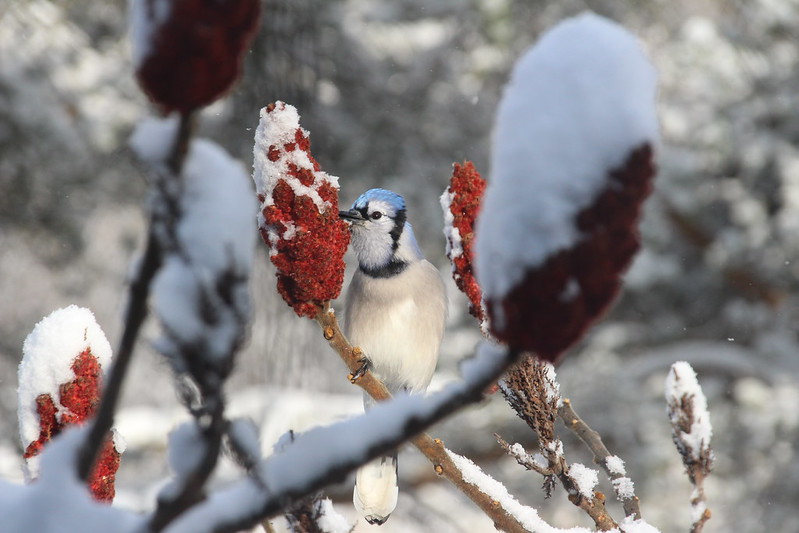
Sumac berries are a multi-season food source for birds and other animals.
There are plenty of other trees besides the prevalent oak dropping their seeds and nuts in the fall. Black Walnut and Butternut trees grow large, green nuts that will fall and turn brown. Hickory nuts are important food sources for animals found where they grow. Just like acorns, many tree nuts have a hard outer shell to protect the edible parts inside, but squirrels, chipmunks, deer and turkey, among other animals have figured out how to crack these shells open. Even the tricky ones like American Chestnut seed pods with their exceptionally spiky outer husk are used as food once they fall and begin to dry out and open on their own.
Mast also refers to a large selection of wild berries. There are plenty of fall berries popping up around us in western New York and Pennsylvania. Red, fuzzy sumac berries grow in the summer but are still widely available throughout the fall. Multiple species of dogwood, including Silky Dogwood with its silvery blue berries, are masting in the fall, providing food for birds whether they are staying or migrating through. Hawthorn berries and rose hips are both red berries with a star shaped bud at one end found in early autumn. Then, of course, there are plenty of varieties of apples growing in the wild and in orchards.
The production and availability of these edible seeds can have profound effects on animal populations. Masting, or mast seeding, is the production of these edible seeds, or mast, in abundance. A mast year usually happens every few years for most tree species producing nuts, and in those years a species will produce a bumper crop. It is also a year where all of the trees seem to coordinate their off-the-rail seed production, and produce an exceptional amount of their seeds or nuts in concert.
The timings of mast seedings can also vary for different species of trees. A couple years ago, cottonwood, a spring seeding plant, snowed their white fluffy seeds down in mass amounts, blanketing the ground in certain areas of the country both due to their numbers and the lack of rain.
Whether the terminology is used, if you pay attention to the seasonal changes, you can often tell what year is a good year for the plants, and what years are sparse. This ebb and flow impact the rest of the ecosystem. Studies in oak forests show that years of abundance can impact both those who directly rely on those food groups and further down the food chain. Increased food allows more seed-eating animals to survive the winter and reproduce the next spring, which then provides more prey for other predators up the food chain. Having an abundance of seeds is also helpful for the trees. When they produce more seeds than the animal population can consume, more of those seeds are likely to survive until spring as well and possibly grow into new trees.
Audubon Community Nature Center builds and nurtures connections between people and nature. ACNC is located just east of Route 62 between Warren and Jamestown. The trails are open from dawn to dusk and birds of prey can be viewed anytime the trails are open. The Nature Center is open from 10 a.m. until 4:30 p.m. daily except Sunday when it opens at 1 p.m. More information can be found online at auduboncnc.org or by calling (716) 569-2345.

